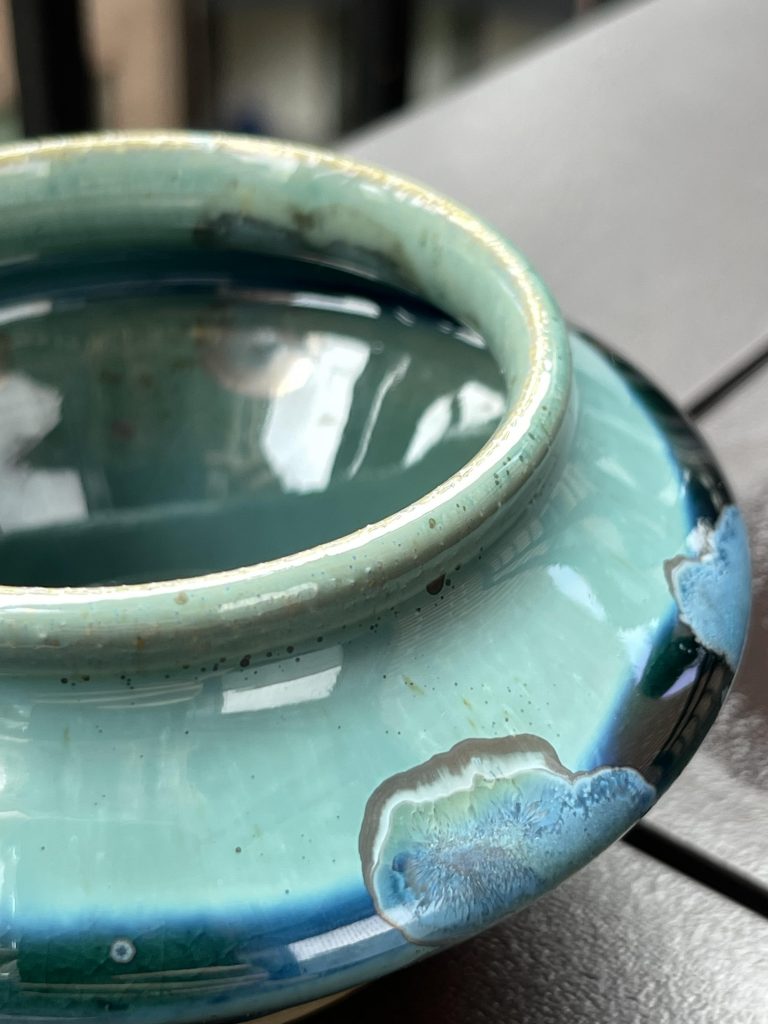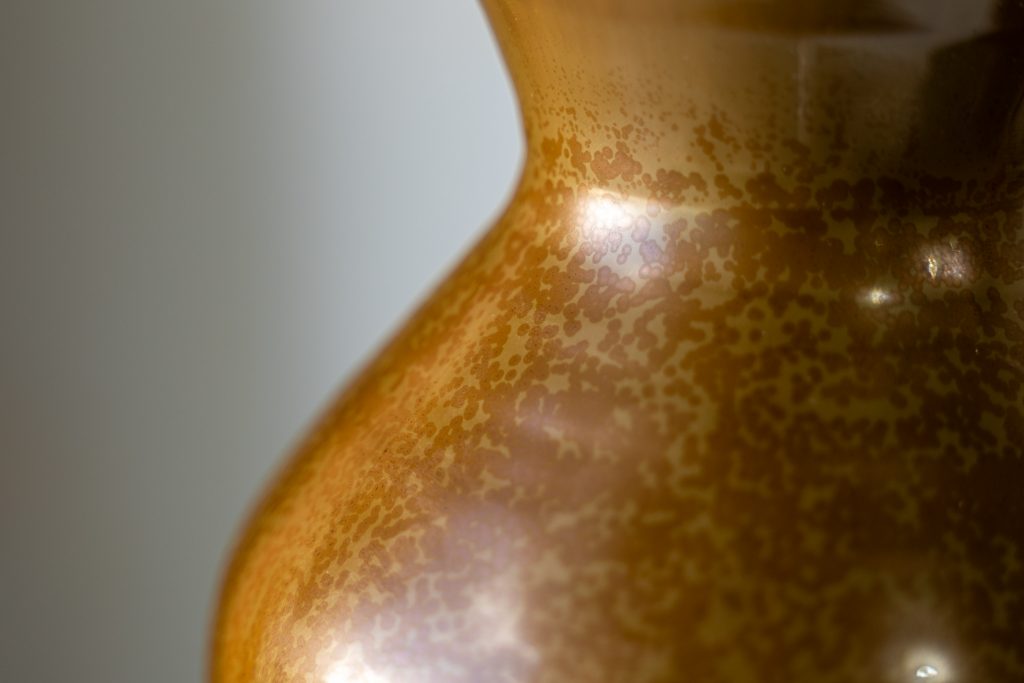Welcome to our newest exploration at the Fire Gallery! In this blog post, we delve into the captivating process of making and applying crystalline glazes. These special glazes are renowned for creating intricate, gem-like surfaces that transform ordinary ceramics into stunning pieces of art. Stay tuned as we guide you through the mesmerizing journey of crystalline glaze making!

Trey Morgan

Trey Morgan
The Allure of Crystalline Glazes
Crystalline glazes are known for their captivating, gem-like surfaces. These glazes create intricate patterns that resemble natural crystals, adding an element of unpredictability and uniqueness to each piece. The beauty of these glazes lies in their ability to turn a simple ceramic object into a mesmerizing masterpiece, with patterns and colors that capture the light and the eye.

Rocco
Technical Insight: Mastering Crystalline Glazes
For those of you interested in the more technical aspects of crystalline glazes, this section dives into the nitty-gritty details that make these glazes so unique and challenging.
1. Composition of Crystalline Glazes:
The basic composition of crystalline glazes includes silica, a flux like a frit or feldspar, and a crystallizing agent, typically zinc oxide. The ratio of these components is crucial. Too much zinc oxide can lead to overly dominant crystals, while too little may result in a lack of crystal formation.
2. Firing Cycle:
The firing cycle for crystalline glazes is critical and significantly different from standard glaze firings. It involves a rapid initial firing to the maturation temperature (usually between cone 9 and 11)*, followed by a controlled cooling process. This cooling phase is where crystals grow, and it’s often a slow, step-down cooling that can take several hours.
3. Kiln Atmosphere:
An oxidizing atmosphere is generally preferred for crystalline glazes. This atmosphere promotes the growth of crystals and the purity of colors, especially when colorants are used.

Trey Morgan
4. Glaze Thickness:
The application of the glaze is another key factor. Crystalline glazes are usually applied thicker than standard glazes. This thickness provides a sufficient amount of material for the crystals to grow in during the cooling phase.
5. Use of Catch Plates:
Due to the fluid nature of crystalline glazes at high temperatures, a catch plate is often used under the piece to catch any glaze that runs off. This not only protects the kiln shelves but also allows for a generous application of glaze without worry.
6. Colorants and Additives:
Experimenting with different colorants (like copper, cobalt, or iron) can yield a wide range of colors and effects. Additives like alumina can affect the size and shape of the crystals, allowing for further experimentation and customization.
Safety Reminder:
Always wear appropriate safety gear, including gloves and a respirator, when mixing glazes, and ensure proper ventilation in your workspace.
Understanding these technical aspects can greatly enhance your ability to work with crystalline glazes and achieve the desired results. As always, experimentation and practice are key to mastering this beautiful and complex glazing technique.
In the Fire Gallery, we’ve seen how crystalline glazes can transform the ordinary into the extraordinary. We encourage you to explore this beautiful technique and see where it takes you. Stay tuned for our upcoming events and workshops where you can learn more about working with crystalline glazes. You can also sign-up for a Glaze Making class with LeRoy.
Until then, keep creating and stay inspired!
-Trey Morgan
For further reading and resources on crystalline glazes, including detailed recipes and firing schedules, visit Ceramic Arts Network. This comprehensive resource offers a wealth of information for potters at all skill levels.
